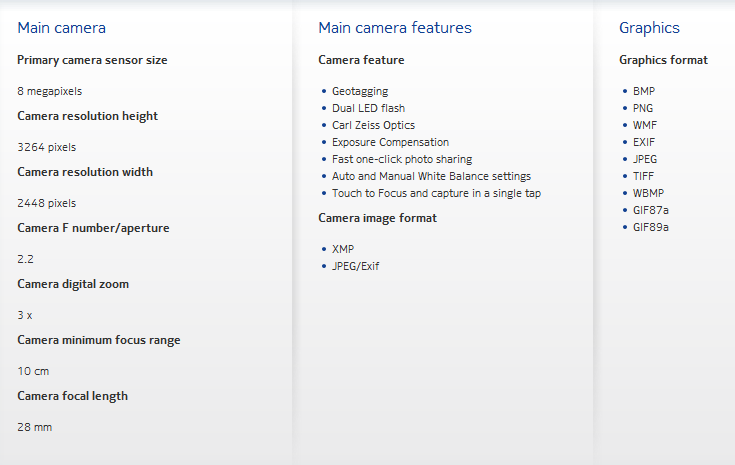There's a lot more hype surrounding the Lumia 800 than the HTC and Samsung Windows Mango phones probably because the Lumia was supposed to be Nokia's great ‘comeback'. Nokia has played its cards carefully with the Lumia, and the company supposedly worked very closely with Microsoft to bring the full Windows Mango experience to users. I'll be the first one to admit that the result is beautiful.

The Lumia 800 is available in three colours – Black, Fuschia and Cyan. While the Black unit looks a lot more professional, the Fushcia and Cyan units are younger and more playful. The body is encased in a polycarbonate shell, which is durable and not prone to scratches, unlike its metallic counterparts. The 3.7-inch glass display has a layer of Corning Gorilla Glass which makes it scratch-resistant, and Nokia has sucked all the air out between the display and the body, so there's no gap between the screen and the side – it looks like one big, smooth unit. If you observe the phone from the sides, you'll see that the glass curves towards the edges, and adds softness to the four sharp corners.

 The volume rocker switch and power button are on the side, as is a dedicated camera button which turns on the camera with a single press. The bottom has a speaker grille which also encases the microphone. There's some fancy engineering on the top panel which houses the micro SIM and mini USB port. The USB port opens with a sort of lever mechanism which requires you to press down on one side of the panel to snap open the flap. Next to that is the SIM card slot, which you have to push sideways for it to pop open – but you can only do this when the USB slot is open. It's fancy, but a bit too much effort for my liking. It's also quite flimsy - when I accidentally dropped the phone the SIM card slot popped open. There's no micro SD card slot for storage expansion – you have to make do with the 16GB of internal storage you get.
The volume rocker switch and power button are on the side, as is a dedicated camera button which turns on the camera with a single press. The bottom has a speaker grille which also encases the microphone. There's some fancy engineering on the top panel which houses the micro SIM and mini USB port. The USB port opens with a sort of lever mechanism which requires you to press down on one side of the panel to snap open the flap. Next to that is the SIM card slot, which you have to push sideways for it to pop open – but you can only do this when the USB slot is open. It's fancy, but a bit too much effort for my liking. It's also quite flimsy - when I accidentally dropped the phone the SIM card slot popped open. There's no micro SD card slot for storage expansion – you have to make do with the 16GB of internal storage you get.



 So is this your phone ??? Are you truly, madly, deeply in love with the Windows Phone operating system? If you're not screaming out "YES! YES! YES!" right now then this phone is not for you.The Lumia 900 is a big show pony handset for people who spend their weekends and evenings penning love sonnets to Microsoft's OS. For everyone else, your hard-earned cash would be better spent on an Android or iOS handset.
So is this your phone ??? Are you truly, madly, deeply in love with the Windows Phone operating system? If you're not screaming out "YES! YES! YES!" right now then this phone is not for you.The Lumia 900 is a big show pony handset for people who spend their weekends and evenings penning love sonnets to Microsoft's OS. For everyone else, your hard-earned cash would be better spent on an Android or iOS handset. Rival smart phones in the 900's price range typically boast multi-core chips -- something Windows Phone doesn't currently support. Many also have better cameras such as the HTC One X or Apple's current super-phone, the iPhone 4S. And when it comes to apps, the Lumia is still the laggard behind iOS and Android.
While cheaper Lumias, such as the 710, pack in a lot for the cash you're spending, here at the tippety-top of the range, Nokia and Microsoft's love-in just isn't such good value for money.
And even if you're Windows Phone's biggest fan, the Lumia 900 is still a hard sell since it's not a huge upgrade on the Lumia 800. Both phones offer essentially identical software and very similar hardware. Lumia 900 buyers are basically paying a premium for a front-facing camera and a larger display.
The 900 is certainly a nice-looking phone -- but the 800 is the most attractive of the Lumia bunch. So even on design grounds, the Lumia 900 isn't the winner. The Lumia 900 has a 4.3-inch ClearBlack AMOLED display. The theory behind Nokia's ClearBack screen tech is it makes blacks look really black, helping surrounding colours to pop out. It gives the screen good contrasts, even in strong daylight. I was hard-pressed to find any sunshine amid the classic British spring weather during testing. But on cloudy days at least, the screen is easy to view outdoors.
The display generally looks bright and colourful, with blacks appearing velvety and deep. As is typical of AMOLED screens, colours can appear over-saturated, while the 900's whites have a slight yellowy hue.
Unlike the Lumia 800, the 900's screen is not curved at the edges -- it's stamped straight onto the face of the phone. There's also a thin raised plastic bezel dividing it from the casing plastic so the look is less fluid, even though both phones share the same basic handset shape.





